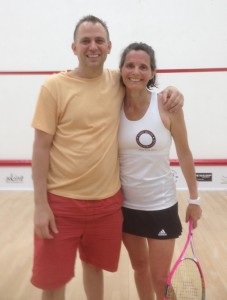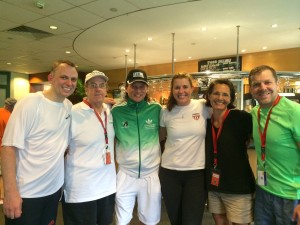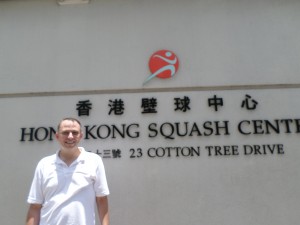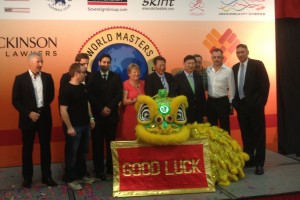This weekend I went up to Toronto to spend two days training and learning from Willie Hosey. Willie is a legend in squash – 11 time Irish pro champ, multiple masters world champion (including in Hong Kong winning the 50+ beating the former world #2 3-0 in the finals), British Open Masters Champion, and even a world doubles pro champ.
I actually played Willie in a tournament 20 years ago and remember it vividly. While I did squeak out a game, for the most part Willie controlled the squash running me corner to corner. I was a very, very fit 24-year-old, but I had never experienced torture quite like that. After the match Willie came over and offered some advice. He said he liked the way I played but that I was using my speed for defense instead of offense. I have wrestled a lot with that comment.
Over the years I haven’t really run into Willie, but this summer watching him tear through the very, very tough draw in Hong Kong reminded me what a tremendous squash player and intellect he is. He is literally thinking and reacting twice as fast as his opponent. If there was anybody who could help me take my game up two or three levels it would be Willie. So I contacted him, set a weekend, bought my plane ticket, and there I was.
Willie had two other elite players join us for a weekend of intense technical and strategic training and what a weekend it was. Attacking early and deceptively to the front, swinging through the ball more quickly, coming off the ball twice as fast, and not getting too close to the ball in the back corners.
Day one was just trying to understand and implement what he was saying. We were on court 3 hours drilling over and over and then trying to implement in game situations. It made sense but I wasn’t feeling it. Over dinner we kept talking squash and I kept thinking through what we had worked on. Technical and strategic talk drifted into stories about the good old days – his matches with Geoff Hunt and Jonah Barrington, training with the top players, and some adventures from the road.
Getting on the court day two my feelings of soreness were overpowered by my determination to get it right. We warmed up, started drilling, and Willie made one more attempt to explain and it suddenly all fit into place. Attacking early and deceptively. Quick off the ball. Quick stroke through the ball. Don’t get too close in the back corners.
We kept drilling and playing – putting it into action – until we just couldn’t move anymore. I headed to the airport, got on the plane and sat down feeling like a new player.





